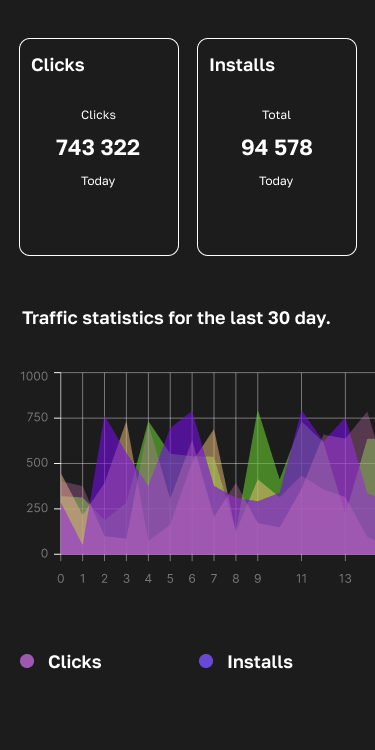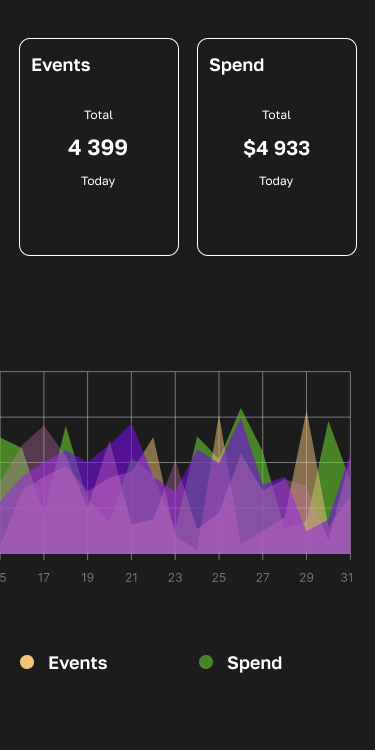The biggest user-acquisition channels behave like “walled gardens” that attribute conversions inside their own platforms and then report them to your MMP. These self-reporting (aka self-attributing) networks include Google Ads, Meta, Apple Search Ads, TikTok, Snap, X Ads and others. Understanding how SRNs claim credit, how their data flows into AppsFlyer/Adjust/Branch, and what’s changing on iOS and Android is now a baseline skill for UA teams, and a lever for cleaner ROAS decisions.
SRNs 101: How they differ from “regular” networks
On a standard network, your MMP records clicks/impressions via tracking links and attributes installs with last-touch logic. An SRN does attribution internally, then responds to the MMP’s API “claim check” when the app first opens. Terminology varies: AppsFlyer says SRN, Adjust/Branch say SAN, but the mechanics are similar: the network verifies matching engagement (click/view) on its side, the MMP sequences touchpoints, and installs are de-duplicated against other partners. Because SRNs don’t use your tracking links, they usually don’t share raw click/impression logs; you’ll see aggregate or modeled data instead.
What’s inside the big platforms can change how your dashboards line up. For example, MMPs time installs by first app open, while some SRNs time by last engagement – a common reason for deltas between Ads Manager and MMP.
The big 2025 updates UA teams should know
AdAttributionKit on iOS. Apple introduced more flexible measurement versus early SKAN: overlapping re-engagement windows with conversion tags, configurable click/view attribution windows per network, cooldown controls to avoid overlaps, country code in postbacks for better geo reads, and a dev postbacks tool for testing. These changes help SRNs and MMPs align re-engagement and geo reporting without device IDs.
Privacy Sandbox on Android. The Attribution Reporting API now supports event-level and aggregatable reports for app-to-app and web-to-app, replacing cross-app identifiers with privacy-preserving postbacks registered via MeasurementManager. Expect partners to phase in AR event and summary reports alongside legacy signals while Android’s rollout continues.
Advanced SRN integrations. To maintain measurement when IDs are missing, several platforms upgraded their MMP connections. AppsFlyer documents Advanced SRN for TikTok, Snap, and X Ads; the pattern combines deterministic attribution when consented IDs exist with privacy-preserving methods (and aggregated reporting) when they don’t. TikTok has been migrating advertisers off its legacy MMP integration; X Ads’ Advanced SRN went live in summer 2025.
Postback nuances you’ll actually encounter. When iOS users don’t share IDFA, some partners accept alternative parameters, e.g., gbraid/gclid for Google or AEM toggles for Meta, to keep postbacks useful; AppsFlyer’s SRN guide details these fallbacks and reminds that raw SRN click/impression logs aren’t available. Plan your pipelines accordingly.
What SRNs mean for budgeting, testing, and reporting
Budgeting. Treat SRNs as intent-rich channels with their own attribution rules. Because they self-attribute, costs in Ads Manager may include view-through windows or longer lookbacks than your MMP. Use the MMP as your single source of truth to normalize eCPI/eCPE/CPO across partners, but reconcile SRN bills against their own windows to avoid “ghost” variances.
Testing. For iOS, design experiments that combine AAK postbacks with MMP reads, especially for re-engagement. For Android, stand up ARA endpoints or work through ad-tech that already supports them, then compare event-level vs. aggregatable lift by geo and app tier. Keep holdouts or geo-PSAs in place; SRNs’ internal models won’t replace incrementality.
Reporting. Expect and explain deltas. SRN managers often show more conversions because of different timing or view-through credit; MMPs de-duplicate across partners and anchor to your chosen window. Document your time-stamp policy (engagement-time vs. conversion-time) so finance isn’t whiplashed when numbers don’t match 1:1.
Targeting hygiene. With SRNs, mis-targeting can quietly drain budgets (e.g., showing UA creatives to existing users). AppsFlyer calls this out and recommends audience syncs to keep UA and retargeting mutually exclusive.
A practical setup that works in 2025
- Wire the newest integrations. If you run TikTok, Snap, or X Ads, check whether your account is on Advanced SRN and finish any required migration steps; otherwise you’ll lose coverage on parts of iOS traffic. For X Ads specifically, the AppsFlyer integration notes full iOS campaign coverage after the switch.
- Align iOS to AAK, Android to ARA. Turn on AAK re-engagement postbacks where available; for Android, validate registerSource()/registerTrigger() and start capturing both event-level and aggregatable reports so you can calibrate modeled ROAS against your MMP.
- Harden postbacks and deep links. Confirm SRN-specific deep-link methods for direct and deferred deep linking; AppsFlyer outlines differences and how to fetch deep-link values per partner.
- Normalize windows and costs. In the MMP, set the attribution windows you’ll use for planning; in each SRN, note their paid windows and view-through policies so finance understands why platform costs and third-party conversions diverge.
What to watch next
- AAK adoption pace. The features are powerful—overlapping re-engagement, configurable windows, geo in postbacks—but industry adoption has lagged previous SKAN versions. Build support, test, and be ready for partners to catch up.
- Privacy Sandbox maturity. Expect more networks to ship native ARA support in SDKs and mediation. As event-level thresholds and noise rules evolve, compare modeled SRN lift to aggregated Android lift before changing bid caps.
- More “Advanced SRN” rollouts. Vendors continue to announce enhanced SRN modes that preserve privacy while filling measurement gaps. Keep an eye on migration timelines so reporting doesn’t break mid-quarter.










